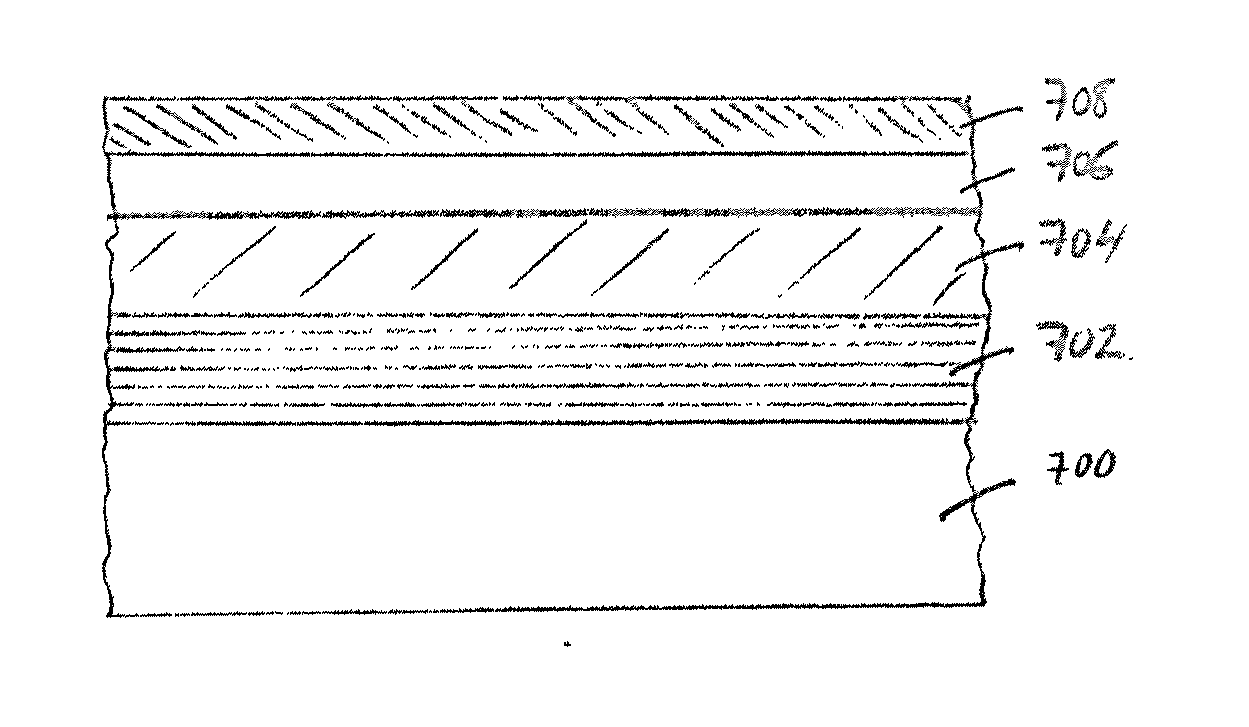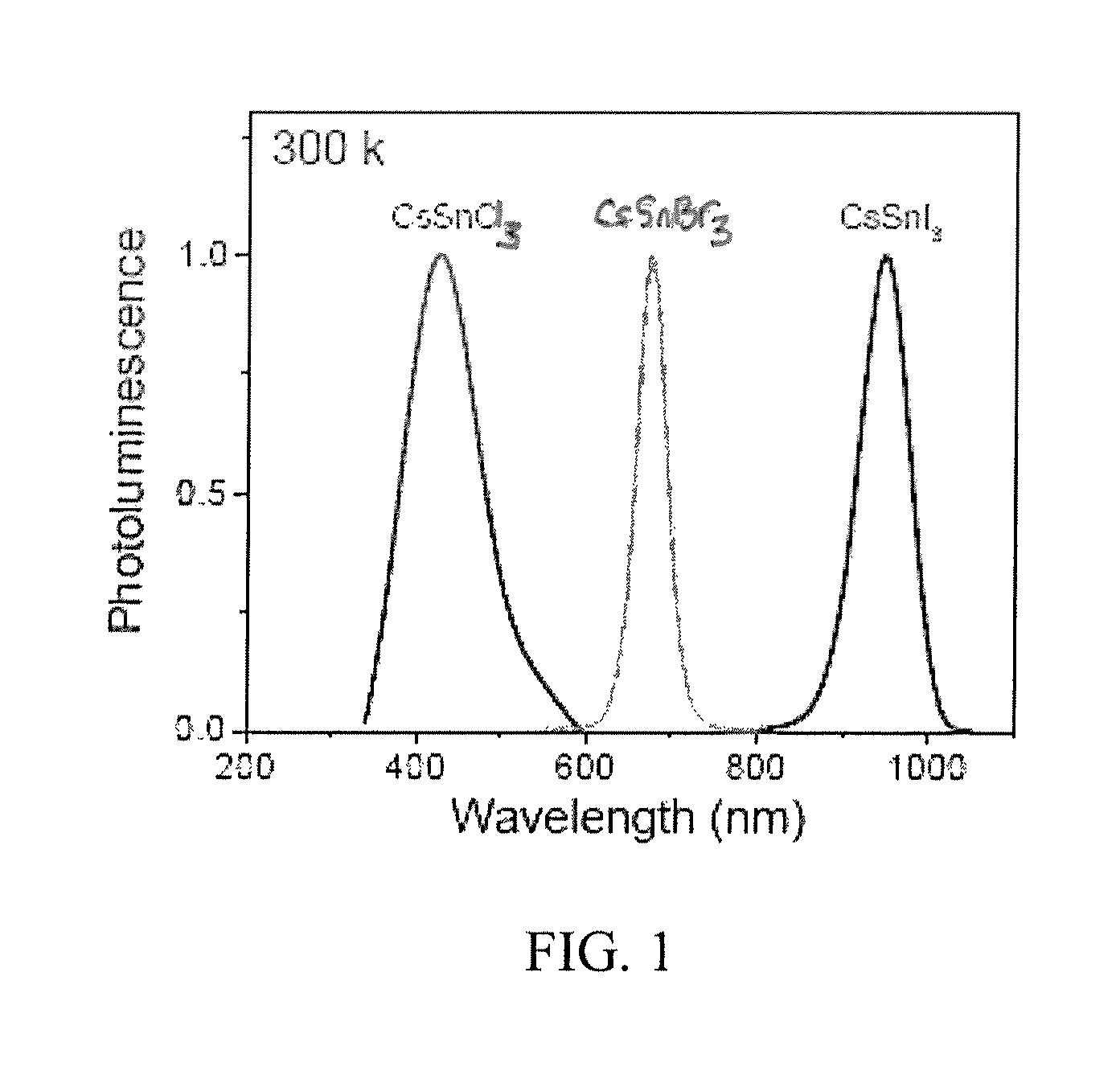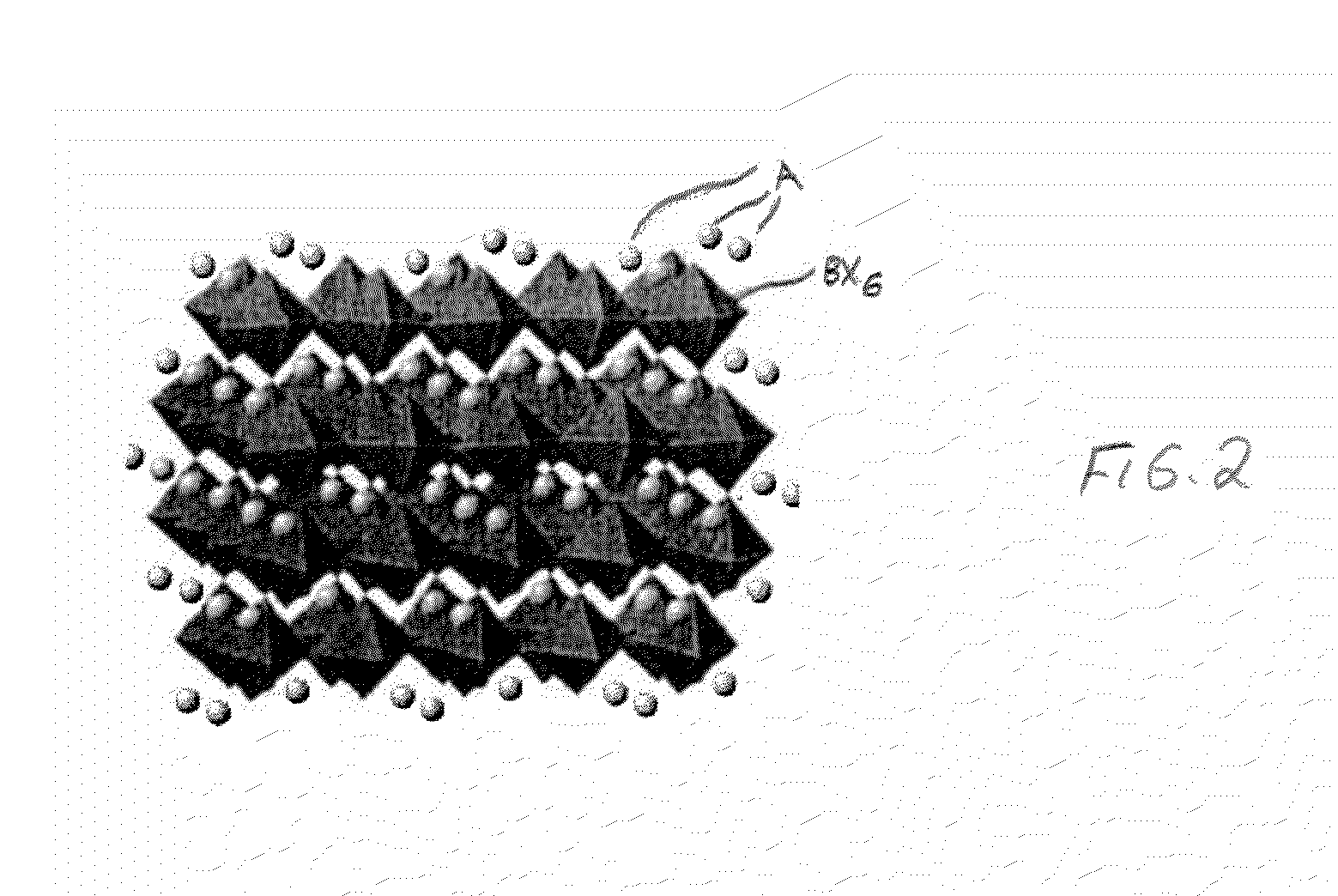Luminescent materials that emit light in the visible range or the near infrared range and methods of forming thereof
a technology of near infrared and visible ranges, applied in the field ofluminescent materials, can solve the problem of relatively insensitive photoluminescent characteristics, and achieve the effects of wide spectral width, high quantum efficiency, and easy formation
- Summary
- Abstract
- Description
- Claims
- Application Information
AI Technical Summary
Benefits of technology
Problems solved by technology
Method used
Image
Examples
example 1
Formation of Luminescent Material—UD930
[0119]Samples of UD930 were formed in a reproducible manner by vacuum deposition in accordance with two approaches. In accordance with one approach, tin(II) iodide and cesium(I) iodide were evaporated in sequential layers, typically up to six layers total. In accordance with another approach, tin(II) chloride and cesium(I) iodide were evaporated in sequential layers, typically up to six layers total. For certain samples, a thickness of the tin(II) chloride-containing layer was about 90 nm, and a thickness of the cesium(I) iodide-containing layer was about 170 nm. Tin(II) iodide (or tin(II) chloride) was deposited by thermal evaporation, while cesium(I) iodide was deposited by electron-beam evaporation. Deposition was carried out at a pressure of about 10−5 Torr (or less) on a variety of substrates, including those formed from glass, ceramic, and silicon.
[0120]Following deposition, resulting samples were annealed in a glove box in a dry, nitrog...
example 2
Characterization of Luminescent Material—UD930
[0121]FIG. 11(a) illustrates excitation spectra obtained for UD930 at temperatures in the range of 12K to 300K, and FIG. 11(b) illustrates emission spectra obtained for UD930 in the same temperature range, according to an embodiment of the invention. As can be appreciated, a variation of the peak positions with temperature is similar for the excitation and emission spectra.
PUM
| Property | Measurement | Unit |
|---|---|---|
| size | aaaaa | aaaaa |
| size | aaaaa | aaaaa |
| absorption coefficient | aaaaa | aaaaa |
Abstract
Description
Claims
Application Information
 Login to View More
Login to View More - R&D
- Intellectual Property
- Life Sciences
- Materials
- Tech Scout
- Unparalleled Data Quality
- Higher Quality Content
- 60% Fewer Hallucinations
Browse by: Latest US Patents, China's latest patents, Technical Efficacy Thesaurus, Application Domain, Technology Topic, Popular Technical Reports.
© 2025 PatSnap. All rights reserved.Legal|Privacy policy|Modern Slavery Act Transparency Statement|Sitemap|About US| Contact US: help@patsnap.com



